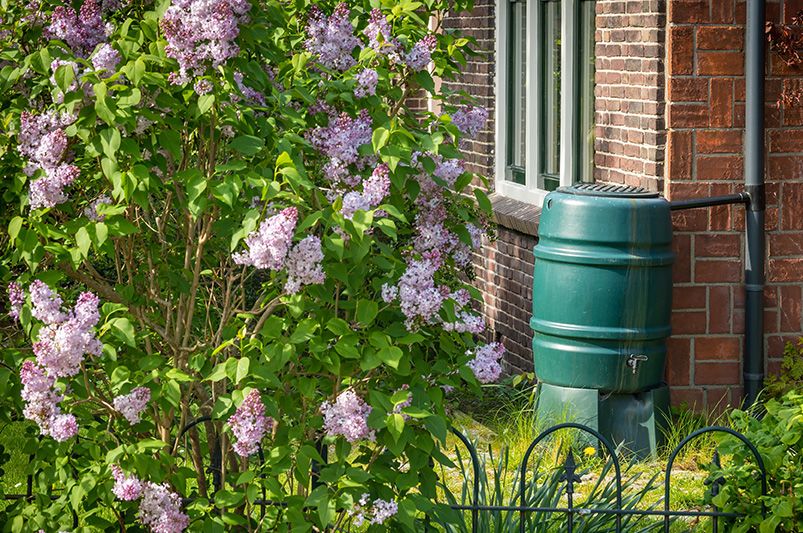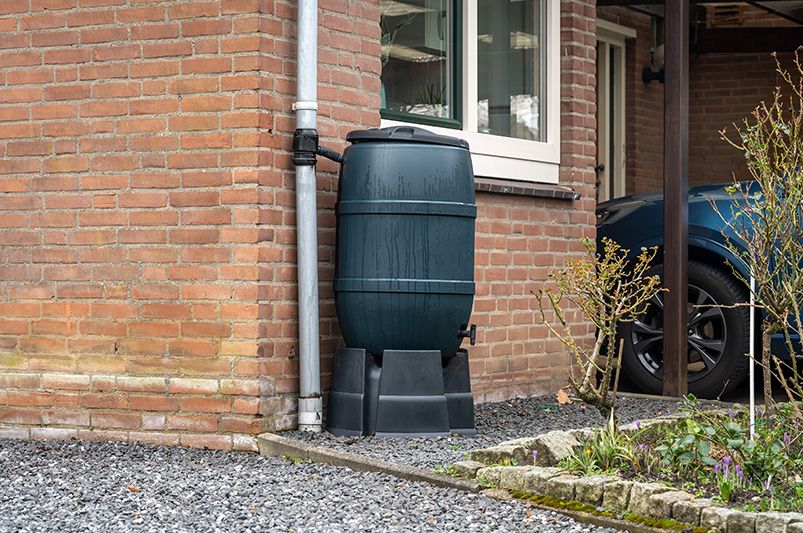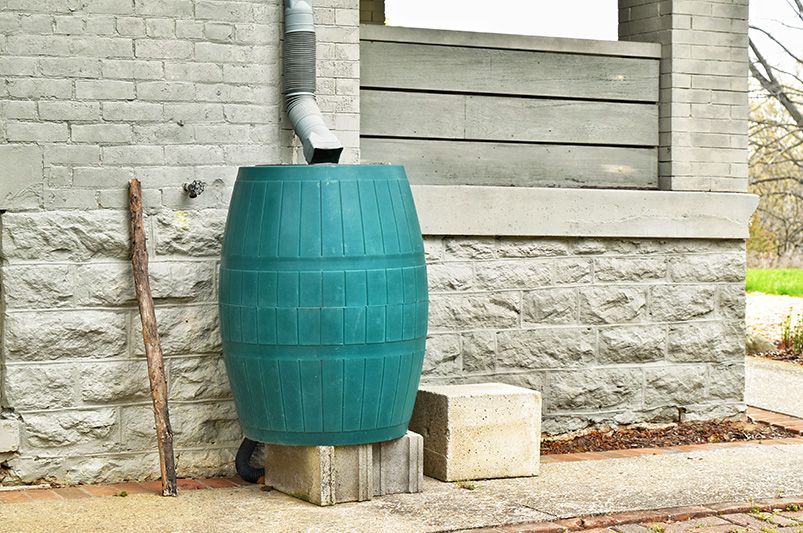
Rain Barrels & Rain Gardens: Eco-Friendly Water Conservation for Your Yard
Published: 06/10/2025 | Updated: 29/10/2025
In an age where droughts are frequent and water bills keep climbing, homeowners are rethinking how to use every drop wisely. Sustainable landscaping isn’t just a trend—it’s a commitment to protecting natural resources while keeping your yard beautiful. Two of the simplest and most powerful ways to do this are through rain barrels and rain gardens.


Together, they form a smart, low-maintenance system that conserves water, prevents runoff, and creates a thriving micro-ecosystem—all right in your backyard. Whether you’re designing from scratch or upgrading your current landscape, these systems blend form and function perfectly.
Let’s explore how rain barrels and rain gardens can help you create a self-sustaining yard that aligns with modern eco-friendly landscaping principles.
Section 1: The Case for Water Conservation at Home
Water is one of the most precious natural resources—and in many regions, one of the most strained. According to the EPA, outdoor irrigation can account for 30–60% of household water use in the summer months. That means much of what you’re paying for literally evaporates.
By rethinking how rainwater is captured, stored, and reused, homeowners can make a measurable impact. Enter two powerful allies: rain barrels and rain gardens—cornerstones of sustainable water practices and stormwater management solutions.
Benefits at a glance:
-
Reduce reliance on municipal water
-
Lower water bills and irrigation costs
-
Prevent stormwater runoff and erosion
-
Filter pollutants naturally
-
Support native plant biodiversity
It’s not just about saving money—it’s about creating a landscape that works with nature, not against it.
Section 2: Rain Barrels – Simple, Smart Water Conservation
Rain barrels are one of the easiest entry points into sustainable living. These containers, usually 40–60 gallons in capacity, capture rainwater directly from your downspouts. Instead of letting that water rush into storm drains, it’s stored and reused to hydrate your garden, lawn, or even potted plants.
Why rain barrels matter
-
Natural hydration: Rainwater is free from chlorine and fluoride, making it gentler on plants and soil microbes.
-
Free resource: One inch of rainfall on a 1,000-square-foot roof can yield over 600 gallons of water.
-
Reduced runoff: Collecting runoff prevents flooding and erosion in low-lying areas of your yard.
-
Stormwater compliance: Many localities now encourage or incentivize rain barrel use to reduce strain on drainage systems.
Step-by-step setup checklist:
-
Choose your size: Start with a 50–60 gallon barrel for moderate rainfall areas.
-
Position under a downspout: Use your roof’s natural slope for maximum capture.
-
Install a debris screen: Prevent leaves, insects, and dirt from clogging your system.
-
Add an overflow valve: Direct excess water safely to a drain or rain garden.
-
Elevate the barrel: Place it on cinder blocks for easier water access and gravity-fed flow.
Example: A homeowner in Portland used three connected rain barrels and reduced municipal water use by 40% during summer months—without sacrificing a lush garden.
Pro Tip:
Integrate a hose or drip irrigation line directly from your barrel to raised beds or planters for effortless watering.

Section 3: Rain Gardens – Nature’s Filtration System
While rain barrels store water, rain gardens help it soak back into the earth—naturally filtered and pollutant-free.
A rain garden is a shallow, planted basin designed to capture runoff from your roof, driveway, or lawn. Instead of pooling or flooding, the water percolates through layers of soil, sand, and plant roots—removing debris, oil, and heavy metals in the process.
Ecological benefits
-
Improved groundwater recharge: Filters and directs water back into the soil.
-
Reduced pollutants: Native plants and soil microbes naturally absorb contaminants.
-
Attracts wildlife: Bees, butterflies, and birds thrive in this biodiverse setting.
-
Erosion control: The garden slows water flow, stabilizing surrounding soil.
How to build a rain garden:
-
Identify a low point: Pick a slightly depressed area that collects rain.
-
Test drainage: Soil should absorb 1–2 inches of water within 24 hours.
-
Excavate 6–12 inches deep: Slope gently toward the center.
-
Add a sand/compost mix: This ensures healthy infiltration.
-
Choose native plants: Opt for species that tolerate both wet and dry conditions.
Native Plant Favorites:
-
Swamp Milkweed (Asclepias incarnata)
-
Black-Eyed Susan (Rudbeckia hirta)
-
Blue Flag Iris (Iris versicolor)
-
Switchgrass (Panicum virgatum)
-
Coneflower (Echinacea purpurea)
Real Case: In Ohio, one homeowner noticed their yard no longer flooded during storms and pollinators doubled after installing a rain garden designed with native grasses.
Section 4: The Synergy of Rain Barrels and Rain Gardens
When combined, rain barrels and rain gardens form a closed-loop system—an elegant example of sustainable water practices in action.
How it works together:
-
Capture: Rain barrels collect runoff directly from your roof.
-
Redirect: Overflow pipes channel excess into the rain garden.
-
Absorb: Native plants filter the water, returning it cleanly to the soil.
This cycle keeps every drop of rainfall working for you. The rain garden becomes a living filtration bed, and the barrels act as reservoirs that extend your irrigation supply even during dry spells.
Advanced Integration Ideas:
-
Automatic drip system: Use a timer and tubing for consistent watering.
-
Smart moisture sensors: Adjust flow based on soil moisture levels.
-
Decorative touches: Integrate barrels into garden designs with lattice screens, paint, or planters.
Design Insight from ShrubHub: Our landscape designers often connect barrel overflow lines into artistic rock-lined rain gardens—creating both function and curb appeal.

Section 5: Making Your Yard a Sustainable Ecosystem
Sustainability goes beyond rain collection—it’s about building a yard that sustains itself. Pairing eco-friendly landscaping practices with native plant benefits fosters balance and resilience.
Simple add-ons to elevate your system:
-
Permeable pavers: Reduce surface runoff.
-
Mulch layers: Lock in soil moisture.
-
Composting: Improve soil fertility naturally.
-
Drought-tolerant plants: Extend your green season while conserving water.
These features, when combined, help homeowners drastically reduce maintenance and reliance on irrigation while still enjoying a lush, beautiful yard.
Section 6: Why Choose ShrubHub for Your Sustainable Landscape Design
At ShrubHub, sustainability isn’t an afterthought—it’s built into every design. Our 3D landscaping experts specialize in creating eco-friendly, low-maintenance yards that fit your lifestyle, region, and budget.
Whether you want to add a rain garden, install rain barrels, or completely transform your outdoor space with native and drought-tolerant plants, ShrubHub can help you visualize and implement it from start to finish.
Start Your Sustainable Landscape Design Today!
See your dream yard in 3D before you ever plant a seed.
Your Complete Homeowner’s Guide to Rain Barrels & Rain Gardens
Learn how to turn stormwater into a sustainable resource with ShrubHub’s free guide! This downloadable PDF includes setup checklists, design inspiration, and plant recommendations for every region.
Download Your Free Guide Now →
FAQs
1. Are rain barrels legal everywhere?
Some municipalities regulate rainwater collection. Always check local guidelines—most now encourage or incentivize barrel installation.
2. How often should I clean my rain barrel?
Every few months. Rinse the inside, clean the mesh screen, and inspect for algae buildup or debris.
3. What plants work best for rain gardens?
Native species adapted to local soil and rainfall—such as milkweed, sedges, and coneflowers—thrive with minimal care.
4. Can I connect multiple barrels together?
Yes! Linking barrels expands storage capacity and distributes water efficiently across your property.
5. Do rain gardens attract mosquitoes?
Not if designed correctly. The soil should absorb water within 24 hours—too fast for mosquitoes to breed.


